 List of Insurance Companies Logos and Names in Madagascar – World Insurance Companies Logos. Click on the insurers emblems to get a wealth of up-to-date information for every insurer in MADAGASCAR. We want to help you find the best coverage.
List of Insurance Companies Logos and Names in Madagascar – World Insurance Companies Logos. Click on the insurers emblems to get a wealth of up-to-date information for every insurer in MADAGASCAR. We want to help you find the best coverage.
List of Insurance Companies Logos and Names in Madagascar
List of Insurance Companies Logos and Names in Madagascar. The graphic mark of a company is synonymous with its brand. A logotype is immediately recognizable and allows the customer to associate the business with the useful qualities like trust, the right price and many other life-saving questions about finding the best insurer.
- All
INSURANCE COMPANIES
According to the audited financial statements for 2004, the BCM had a negative equity equivalent to US$26 million, and reported operating losses after each of the last three years. In 2004, the losses of the BCM amounted to the equivalent of US$14 million (or 1.5 percent of its total assets).
The losses have been largely due to the absence of remuneration on a significant amount of loans to the government, write off losses due to financial transactions assumed on behalf of the treasury and high operating expenditures.
Loans to the government stood at around 21 percent of total assets of the BCM at end-2004. The bulk of these loans (77 percent of the total) consisted of unpaid, BCM-guaranteed London Club debt, which the BCM had to assume when the guarantee was called. BCM loans to a former state enterprise, for which the obligations were transferred to the state when the company was privatized, have also remained unremunerated and account for an additional 15 percent of the total exposure of BCM in the state.
A financially strong BCM is needed to ensure its ability to carry out its prime functions.
Failure to promptly address the losses and their causes could interfere with monetary and exchange rate management, performance of the LOLR function, and/or jeopardize the supervisory functions of the CSBF, which is funded and staffed by the BCM—and is currently in need of reinforcement in human and financial resources.
The underlying causes of the insolvency of the BCM, e.g., the ongoing operating losses, need to be urgently addressed. The authorities intend to seek Fund TA to develop a basis for the sustained financial viability of the BCM.
Key measures to return the BCM to profitability are: (i)either remuneration at market rates of all government debt on the central bank‚ balance sheet, or repayment or other forms of removal by the treasury from the BCM‚Äôs balance sheet; (ii) review of non-interest operating expenditures with a view to their reduction to a level commensurate with revenues; and (iii) non-recurrence of transfers of government debt or quasi-fiscal expenses to the BCM, other than through statutory advances on tax revenues at the beginning of the budget year, provided these advances are at an acceptable level and are promptly repaid. Supervisory regime are the necessary conditions for the development of the sector.
A new insurance code, largely in conformity with international standards, was adopted in 1999 but has not been effectively implemented.
The insurance market is dominated by two state-owned insurance companies, which hold a market share of 89 percent of premium income. There has been no foreign presence since the 1975 nationalization of a French insurer. However, foreign companies have expressed an interest in entering the market, although reportedly not as potential parties to the planned but long-delayed privatization of the two state-owned companies.
From IMF
Discover more insurance company logos in Africa Insurance Companies Logos.
Madagascar, Africa – World Insurance Companies Logos
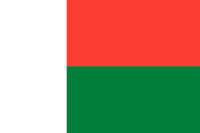
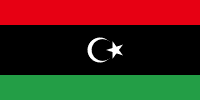
 List of Insurance Companies Logos and Names in Libya – World Insurance Companies Logos. Click on the insurance company logos to get a bunch of up-to-date information from every insurer in LIBYA. We are interested in helping you find the best insurance.
List of Insurance Companies Logos and Names in Libya – World Insurance Companies Logos. Click on the insurance company logos to get a bunch of up-to-date information from every insurer in LIBYA. We are interested in helping you find the best insurance. 
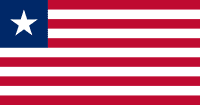



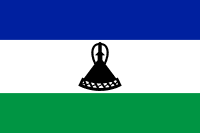
 List of Insurance Companies Logos and Names in Lesotho – World Insurance Companies Logos. Click on insurers logos for a wealth of up-to-date information available to every insurer. We are interested in helping you find the best coverage.
List of Insurance Companies Logos and Names in Lesotho – World Insurance Companies Logos. Click on insurers logos for a wealth of up-to-date information available to every insurer. We are interested in helping you find the best coverage. 

 List of logos and names of insurance companies in Kenya – World Insurance Companies Logos. Click on the insurance company logos to get a bunch of updated information offering to every insurer. We would like to help you find the best assurance.
List of logos and names of insurance companies in Kenya – World Insurance Companies Logos. Click on the insurance company logos to get a bunch of updated information offering to every insurer. We would like to help you find the best assurance. 

 List of Insurance Companies Logos and Names in Equatorial Guinea – World Insurance Companies Logos. Click on the Insurance Company logos to get a wealth of up-to-date information for every insurer. We would like to help you find the best.
List of Insurance Companies Logos and Names in Equatorial Guinea – World Insurance Companies Logos. Click on the Insurance Company logos to get a wealth of up-to-date information for every insurer. We would like to help you find the best. 
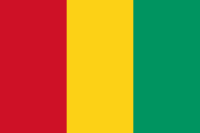
 List of Insurance Companies Logos and Names In Guinea – World Insurance Companies Logos. Click on the Insurers logos to get a bunch of updated information offering to every insurer. Take a look at the essential points about health care in Guinea
List of Insurance Companies Logos and Names In Guinea – World Insurance Companies Logos. Click on the Insurers logos to get a bunch of updated information offering to every insurer. Take a look at the essential points about health care in Guinea

 List of Insurance Companies Logos and Names in Ghana – World Insurance Companies Logos. Click on the insurers logos to get a bunch of updated information for every insurer. Take a look at the essential points about healthcare in Ghana.
List of Insurance Companies Logos and Names in Ghana – World Insurance Companies Logos. Click on the insurers logos to get a bunch of updated information for every insurer. Take a look at the essential points about healthcare in Ghana.

 List of Insurance Companies Logos and Names in the Gambia – World Insurance Companies Logos. Click on the insurance company logos for a wealth of up-to-date information for every insurer. Take a look at the essential points about healthcare in the Gambia.
List of Insurance Companies Logos and Names in the Gambia – World Insurance Companies Logos. Click on the insurance company logos for a wealth of up-to-date information for every insurer. Take a look at the essential points about healthcare in the Gambia.
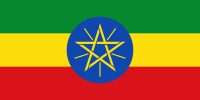
 List of Insurance Companies Logos and Names in Ethiopia – World Insurance Companies Logos. Click on the logos with the names of the insurance companies to get a lot of up-to-date information. Take a look at the essential points about healthcare in Ethiopia.
List of Insurance Companies Logos and Names in Ethiopia – World Insurance Companies Logos. Click on the logos with the names of the insurance companies to get a lot of up-to-date information. Take a look at the essential points about healthcare in Ethiopia.